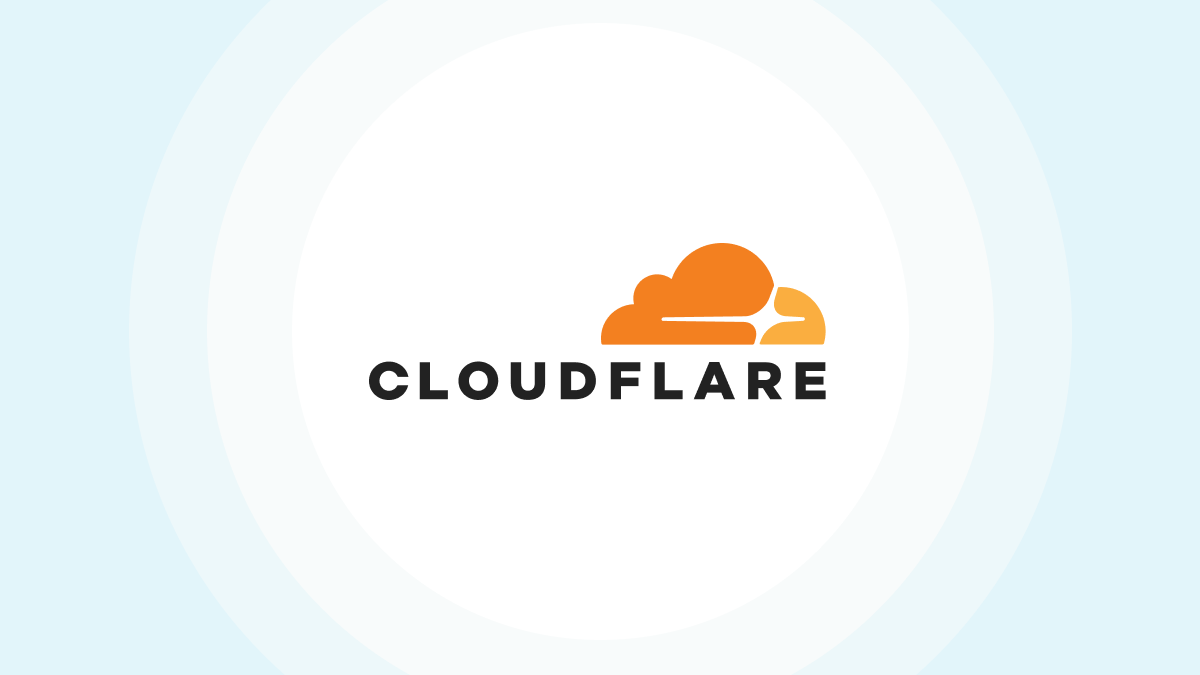Tech Bytes: Getting Performance Visibility Into The Last 6 Feet (Sponsored)
You’ve heard of the last mile problem. Today on the Tech Bytes podcast we’re talking problems with the last six feet. With work-from-anywhere becoming commonplace, one of the hardest challenges for IT is how to measure user experience and troubleshoot problems happening somewhere between the desktop and a home router. Our sponsor AppNeta has some ideas on how to help.Tech Bytes: Getting Performance Visibility Into The Last 6 Feet (Sponsored)
You’ve heard of the last mile problem. Today on the Tech Bytes podcast we’re talking problems with the last six feet. With work-from-anywhere becoming commonplace, one of the hardest challenges for IT is how to measure user experience and troubleshoot problems happening somewhere between the desktop and a home router. Our sponsor AppNeta has some ideas on how to help.
The post Tech Bytes: Getting Performance Visibility Into The Last 6 Feet (Sponsored) appeared first on Packet Pushers.
JAMSTEC Goes Hybrid On Many Vectors With Earth Simulator 4 Supercomputer
Sponsored When it comes to compute engines and network interconnects for supercomputers, there are lots of different choices available, but ultimately the nature of the applications – and how they evolve over time – will drive the technology choices that organizations make. …
JAMSTEC Goes Hybrid On Many Vectors With Earth Simulator 4 Supercomputer was written by Timothy Prickett Morgan at The Next Platform.
Network Break 352: Nokia Announces 800G Routing Silicon; Pica8 Enticingly Prices Its Campus Controller, Switches
This week's Network Break podcast discusses Nokia's new beefed-up routing silicon, how Pica8 is pursuing campus switching with a controller/switch pricing bundle, and the latest critical security patches from Cisco. We also look at the latest ransomware attacks against US agricultural companies, a MacOS bug, and more tech news.Network Break 352: Nokia Announces 800G Routing Silicon; Pica8 Enticingly Prices Its Campus Controller, Switches
This week's Network Break podcast discusses Nokia's new beefed-up routing silicon, how Pica8 is pursuing campus switching with a controller/switch pricing bundle, and the latest critical security patches from Cisco. We also look at the latest ransomware attacks against US agricultural companies, a MacOS bug, and more tech news.
The post Network Break 352: Nokia Announces 800G Routing Silicon; Pica8 Enticingly Prices Its Campus Controller, Switches appeared first on Packet Pushers.
Easily creating and routing email addresses with Cloudflare Email Routing


Over four billion people — or half of the world’s population — have at least one email address, many of whom use it as an essential tool to stay on top of their personal and professional matters. More than 300 billion emails are sent and received every day, but seeing email as just a communications tool wouldn’t do it justice. Its impact in our lives goes far beyond being a vessel for messages — its use cases also cover being a common way of validating one’s identity online, and serving as the gateway for other communication platforms.
Today, most people use their email for sensitive purposes, such as logging in to their bank account, or communicating with governmental entities. At the same time, they will use that email to sign up for a 10% off coupon they found online, which will surely spam them for months to come. Despite these two use cases being polar opposites in relation to importance and security, people take the risk, usually for the sake of conveniently managing one account.
Much in the same way, businesses want to have different email addresses for different types of inquiries, such as sales and support, but often find Continue reading
Tackling Email Spoofing and Phishing


Today we’re rolling out a new tool to tackle email spoofing and phishing and improve email deliverability: The new Email Security DNS Wizard can be used to create DNS records that prevent others from sending malicious emails on behalf of your domain. This new feature also warns users about insecure DNS configurations on their domain and shows recommendations on how to fix them. The feature will first be rolled out to users on the Free plan and over the next weeks be made available for Pro, Business and Enterprise customers, as well.

Before we dive into what magic this wizard is capable of, let’s take a step back and take a look at the problem: email spoofing and phishing.
What is email spoofing and phishing?
Spoofing is the process of posing as someone else which can be used in order to gain some kind of illicit advantage. One example is domain spoofing where someone hosts a website like mycoolwebpaqe.xyz to trick users of mycoolwebpage.xyz to provide sensitive information without knowing they landed on a false website. When looking at the address bar side by side in a browser, it’s very hard to spot the difference.

Then, there is Continue reading
State of IT Security in 2021
Patrik Schindler sent me his views on code quality and resulting security nightmares after reading the Cisco SD-WAN SQL Injection saga. Enjoy!
I think we have a global problem with code quality. Both from a security perspective, and from a less problematic but still annoying bugs-everywhere perspective. I’m not sure if the issue is largely ignored, or we’ve given up on it (see also: Cloud Complexity Lies or Cisco ACI Complexity).
State of IT Security in 2021
Patrik Schindler sent me his views on code quality and resulting security nightmares after reading the Cisco SD-WAN SQL Injection saga. Enjoy!
I think we have a global problem with code quality. Both from a security perspective, and from a less problematic but still annoying bugs-everywhere perspective. I’m not sure if the issue is largely ignored, or we’ve given up on it (see also: Cloud Complexity Lies or Cisco ACI Complexity).
Cloudflare’s Annual Founders’ Letter

This week we celebrate Cloudflare's birthday. We launched the company 11 years ago tomorrow: September 27, 2010. It has been our tradition, since our first birthday, to use this week to launch innovative new products that we think of as our gift back to the Internet.
Since going public, it's also been an opportunity for us to update our Annual Founders' Letter and share what's on our mind. Recently we've been thinking about three things: team, the Internet, and innovation.
Team
When anyone asks us the key to Cloudflare's success, we always say the same thing: the team we've been able to attract to help us achieve our mission of helping build a better Internet. In the last year we've had more than 250,000 people apply to work for us and extended offers to less than one half of one percent of them. We continue to attract great people.
It's incredible to realize that more than half of Cloudflare's team today started since March 13, 2020, when we closed all our physical offices due to the pandemic. In the last several months, as we've started to see a light at the end of the COVID tunnel, we've been hosting what Continue reading
NSF Puts $10 Million Into Composable Supercomputer
If they are doing their jobs right, the high performance computing centers around the world in academic and government institutions are supposed to be on the cutting edge of any new technology that boosts the performance of simulation, modeling, analytics, and artificial intelligence. …
NSF Puts $10 Million Into Composable Supercomputer was written by Timothy Prickett Morgan at The Next Platform.
Private 5G Needs Complexity To Thrive

I know we talk about the subject of private 5G a lot in the industry but there are more players coming out every day looking to add their voice to the growing supporters of these solutions. And despite the fact that we tend to see 5G and Wi-Fi technologies as ships in the night this discussion isn’t going to go away any time soon. In part it’s because decision makers aren’t quite savvy enough to distinguish between the bands, thinking all wireless communications are pretty much the same.
I think we’re not going to see much overlap between these two technologies. But the reasons why aren’t quite what you might think.
Walking Workforces
Working from anywhere other than the traditional office is here to stay. Every major Silicon Valley company has looked at the cost benefit analysis and decided to let workers do their thing from where they live. How can I tell it’s permanent? Because they’re reducing salaries for those that choose to stay away from the Bay Area. That carrot is pretty enticing and for the companies to say that it’s not on the table for remote work going forward means they have no incentive to make people Continue reading
All Things Networking at VMworld 2021
Must-See Sessions for Networking
This year’s networking sessions – based on the audience feedback from VMworld 2020 – not only feature more customers stories and interviews, but have a balance of innovation, industry trends, roadmap, and technical get-your-hands-dirty sessions. The VMworld 2021 Session Types and Levels summary gives you an idea of what’s available for you and your colleagues.
If you’re not sure about the different learning tracks or what they will include, check out the VMworld learning index here. The robust Content Catalog will allow you to filter sessions based on topic, tracks, products, type and level; the scheduler lets you to build an itinerary.
Lastly, we have made a list of can’t miss sessions based on your role.
For Networking Leaders:
- Solution Keynote: Self-Service will Modernize Networks
- Self-Service will Modernize Networks – See it in Action with HSBC
- Operationalizing Zero Trust at Scale – Lessons Learned
For Networking Practitioners:
Technology Short Take 145
Welcome to Technology Short Take #145! What will you find in this Tech Short Take? Well, let’s see…stuff on Envoy, network automation, network designs, M1 chips (and potential open source variants!), a bevy of security articles (including a couple on very severe vulnerabilities), Kubernetes, AWS IAM, and so much more! I hope that you find something useful here. Enjoy!
Networking
- Adam Kotwasinski walks readers through deploying Envoy and Kafka to collect broker-level metrics.
- Ivan Pepelnjak shares some links and thoughts on configuring the NSX-T firewall with a CI/CD pipeline built on GitHub Actions and Terraform Cloud.
- Author “JulioPDX” (I couldn’t find the author’s real name on any of their online profiles) has an article on integrating Nornir with FastAPI.
- Vincent Bernat provides some feedback on Cisco pyATS and Genie Parser.
- Russ White shares some thoughts on the collapsed spine network design.
- Justin Pietsch talks about simplifying networks and the resulting engineering trade-offs.
Servers/Hardware
- Howard Oakley of The Eclectic Light Company discusses some details on Apple’s M1 chip and what it does differently than other chips. Also included in this post are links to other articles with even more details—very helpful.
- Are open source M1-style chips a possibility? This article Continue reading